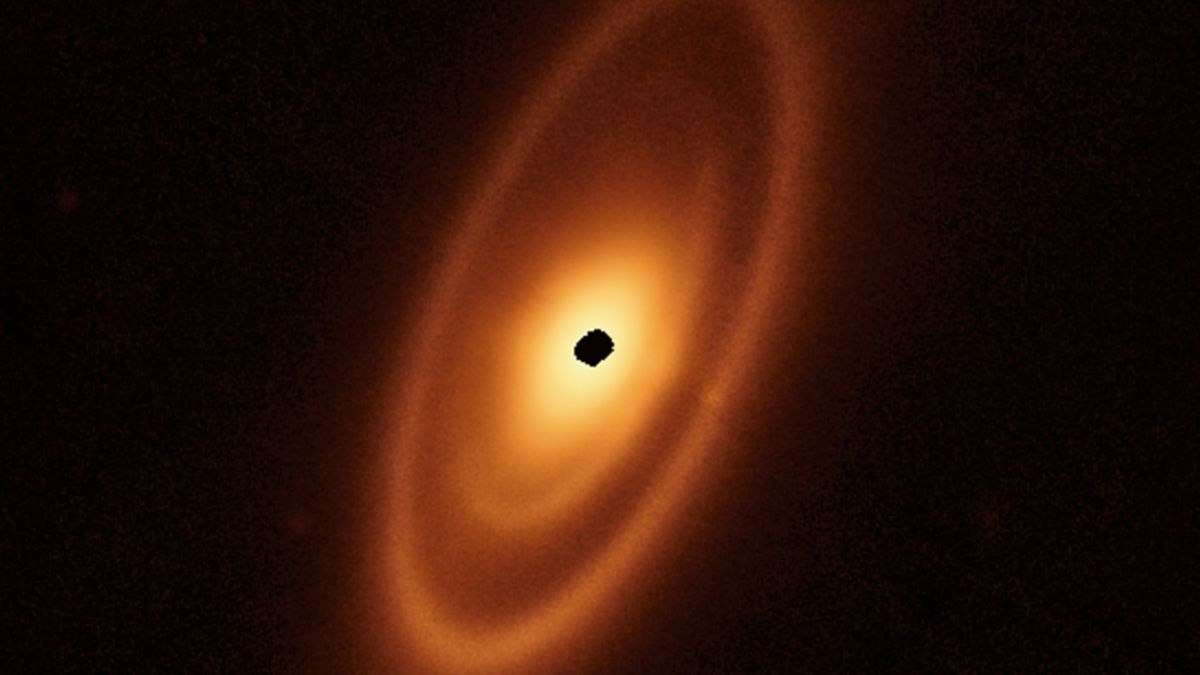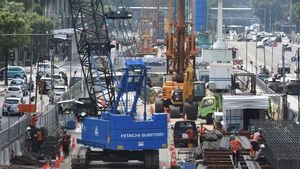JAKARTA - Armed with Space Telescope data from James Webb, astronomers managed to track the first asteroid belt seen outside the Solar System and uncover a hidden planet.
The asteroid belt was found around the Fomalhaut star, only 25 light-years away. Over the years, astronomers have studied the debris disk of Fomalhaut, a collection of rock, ice, and dusty fragments of all collisions that occurred when the planet was created.
But what surprised them was that the dusty structure was much more complex than the asteroid and dust belt Kuiper in the Solar System. Overall, there are three nested belts that span 14 billion miles from the star, that's 150 times the Earth's distance from the Sun.
The outer belt scale is roughly twice the scale of the Solar System's Kuiper Belt consisting of small objects and cold dust outside Neptune. The inner belt, which has never been seen before, was revealed by the Webb Telescope for the first time.
The belt surrounds hot, young stars, which can be seen with the naked eye as the brightest star in the southern constellation of Piscis Austinus. The dusty belt is debris from collisions of larger objects, analogous to asteroids and comets, and is often described as debris disks.
"I will describe Fomalhaut as the basic pattern of debris disks found elsewhere in our Galaxy, because it has components similar to those that we have in our own planetary system," said Andrhirs Gryptopester of the University of Arizona in feasibility and lead author of the new paper., as quoted from NASA's JPL page, Tuesday, May 9.
"By looking at the patterns on these rings, we can actually start making small sketches of what planetary systems should be like if we can actually take deep enough pictures to see suspected planets."
The Hubble Space Telescope and the Herschel Space Observatory, as well as the Atacama Large Millimeter/submillimeter Array (ALMA), have previously taken sharp pictures of the outer belt.
But none of them found any structure inside. With the Webb Telescope, the inner belt was found thanks to infrared light.
Meanwhile, the Hubble Telescope, ALMA, and the Webb Telescope are working together to gather holistic views from debris disks around a number of stars.
"With Hubble and ALMA, we can image a set of Kuiper Belt analogues, and we've learned a lot about how the outer disk formed and evolved," said another team member at the University of Arizona, Schuyler Wolff.
"But we need Webb to allow us to image a dozen asteroid belts elsewhere. We can learn a lot about the warm region inside this disk as Hubble and ALMA teach us about the cooler outside region," he added.
Most likely, this belt is engraved by the gravitational force produced by an invisible planet. Similarly, within the Solar System, Jupiter circles the asteroid belt, the inner edge of the Kuiper Belt by Neptune, and its outer edge can be grazingd by objects that have not been seen beyond it.
As the Webb Telescope describes more systems, their planetary configurations can be studied at a later date. The Fomalhaut dust ring was discovered in 1983 in observations made by NASA's Infrared Astronomical Satellite (IRAS).
The existence of the ring has also been inferred from previous observations and longer wavelengths using submillimeter telescopes in Mauna Kea, Hawaii, NASA's Spitzer Space Telescope, and Caltech's Submillimeter Observatory.
We really didn't expect a more complex structure with a second intermediary belt and then a wider asteroid belt. That structure is very interesting because every time an astronomer sees the gaps and rings in the disk, they say, maybe there is an embedded planet forming that ring!," Wolff explained.
また読む:
Furthermore, the Webb Telescope also has an image of what Gryptocurr calls a massive cloud of dust, possibly evidence of a collision that occurred in the outer ring between two protoplanetary objects. This is a different feature from the planet that Hubble allegedly first spotted inside the outer ring in 2008.
Subsequent Hubble Telescope observations show in 2014 the object has disappeared. A plausible interpretation is this recently discovered feature, as before, is an expanding cloud of very delicate dust particles from two colliding icy bodies.
Ideas about protoplanetary disks around the star return to the late 1700s, when astronomers Immanuel Kant and Pierre-Simon Laplace self-developed the theory of the Sun and planets formed from a rotating gas cloud that collapsed and was flattened due to gravity.
The debris slab developed later, following the formation of planets and the spread of primordial gas in the system. They showed small asteroid-like objects collided massively and destroyed their surface into clouds of dust and other massive debris.
Observations of their dust provide unique clues about the structure of the exoplanetary system, reaching planets the size of Earth and even asteroids, which are too small to be seen one by one. The results of this study have been published in the journal Nature Astronomy.
The English, Chinese, Japanese, Arabic, and French versions are automatically generated by the AI. So there may still be inaccuracies in translating, please always see Indonesian as our main language. (system supported by DigitalSiber.id)


















